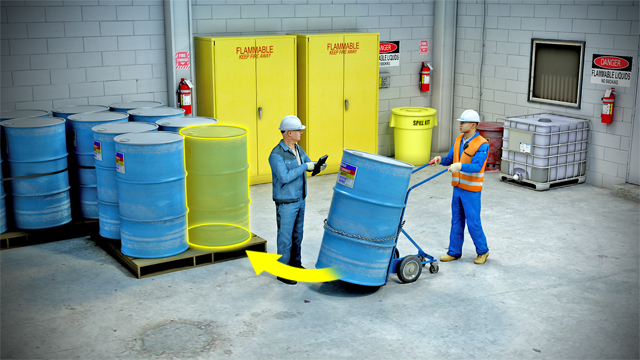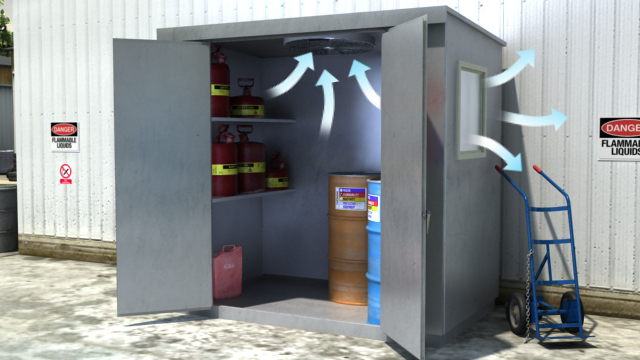




Storage and Handling of Category 1 and 2 Flammables
GHS Category 1 and 2 Flammable liquids have flash points below 73.4 °F (23 °C), which means that they produce vapors that can ignite and burn at normal working temperatures if an ignition source is present. Their ability to self-ignite and to explode under certain conditions make them particularly hazardous. To safely store and handle flammable liquids, read and understand their labels and safety data sheets, and follow the best practices and regulations included in this course and established for your worksite or location.
Request a demoCourse Details
Learning Objectives
• Define the terms “flash point,” “boiling point,” “autoignition temperature,” “explosive limits” • Differentiate between “combustibles” and “flammables” • Describe how flammables and combustibles are classified or categorized • Describe OSHA’s HazCom Standard workplace requirements for hazardous chemicals • Describe how flammability is indicated on chemical labels • Identify the characteristics of flammables which make them especially hazardous • List storage and handling best practices for flammable liquids
Specs
| Course Level | Intermediate |
| Languages | English |
| Compatibility | Audio, Video |
| Based on: | 29 CFR 1910 (2016): Occupational Safety and Health Standards NFPA 30: Flammable and Combustible Liquids Code |
Key Questions
What is the difference between NFPA and OSHA/GHS “flammable” liquid classifications?
According to OSHA and the GHS, only liquids with flash points below 199.4 °F (93 °C) are categorized as “flammable.” NFPA 30 defines 6 classes of “flammable” and “combustible” liquids — “flammable” liquids have flash points below 100 °F (38 °C) and “combustible” liquids have flash points above 100 °F (38 °C).
What is the Hazardous Communication, or HazCom, standard?
OSHA created the HazCom Standard to protect U.S. workers from chemical hazards. It requires information on the identities and hazards of workplace chemicals to be available and understandable to workers.
What are upper and lower “explosive limits”?
Upper and lower “explosive limits” define the concentration range of vapor in air that will burn or explode if an ignition source is present.
What are NFPA specifications for inside storage rooms that are used to store flammable liquids?
They must be equipped with liquid-tight raised door sills or open-grated trenches, fire doors, liquid-tight floor-to-wall joints, and window protection. They must also meet the fire resistive rating for their use.
How often should inventory be taken for chemicals at a worksite?
It is best to maintain an accurate inventory at all times by updating it whenever a chemical is added to or removed from a site.
Sample Video Transcript
A material’s autoignition temperature (or AIT) is the temperature at which, in the presence of oxygen, the material can self-ignite without an obvious ignition source. It is completely independent of flash point. Most common flammables have AITs above 570 °F (300 °C), but a few are lower. AITs are included in SDSs and can be used to evaluate the hazard level present when a liquid is exposed to elevated temperatures. The vapors from some solvents can be ignited by items like hot steam pipes, and serious accidents have occurred when low-AIT solvents were heated in solvent-evaporating ovens.
Additional Resources
- Occupational Safety and Health Administration (OSHA) – www.osha.gov
- OSHA Standards – https://www.osha.gov/pls/oshaweb/owastand.display_standard_group?p_toc_level=1&p_part_number=1910
- National Fire Protection Association (NFPA) – http://www.nfpa.org/
- NFPA 30 Standard – http://www.nfpa.org/codes-and-standards/all-codes-and-standards/list-of-codes-and-standards?mode=code&code=30
Course Applies To
Demos + Pricing
Learn more about our courses, get pricing, and see our platform.











